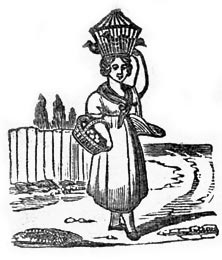
Highlights
Ballads
Broadsides on all themes ranging from romance and exile to politics and sport were often published as ballads. Many of these were derived from past folk culture and learnt by ear rather than from a written source. In time the term came to be applied more broadly to any kind of popular or topical verse. The popularity of the street ballad coincided with the decline of the traditional minstrel.
Among the earliest ballads printed was 'The ballade of the Scottysshe Kynge', written by John Skelton about the battle of Flodden Field, 1513. Broadside ballads became popular as a means of expression in Britain during the Reformation, and by the early 19th century had adapted to deal with the concerns of ordinary people.
Entertainment
Famous writers such as Robert Burns, Robert Tannahill and Allan Ramsay produced ballads, but generally the composer was unknown. Most of the ballads were sung by hawkers who sold them for a penny or a halfpenny.
In an age when when most of the population was illiterate, street balladry was a popular form of entertainment, as well as providing the general public with the latest news. The tunes were either established favourites or occasionally new tunes which were suggested on the sheet of words. Only a small number of broadsides printed musical notation - often only for decoration.


